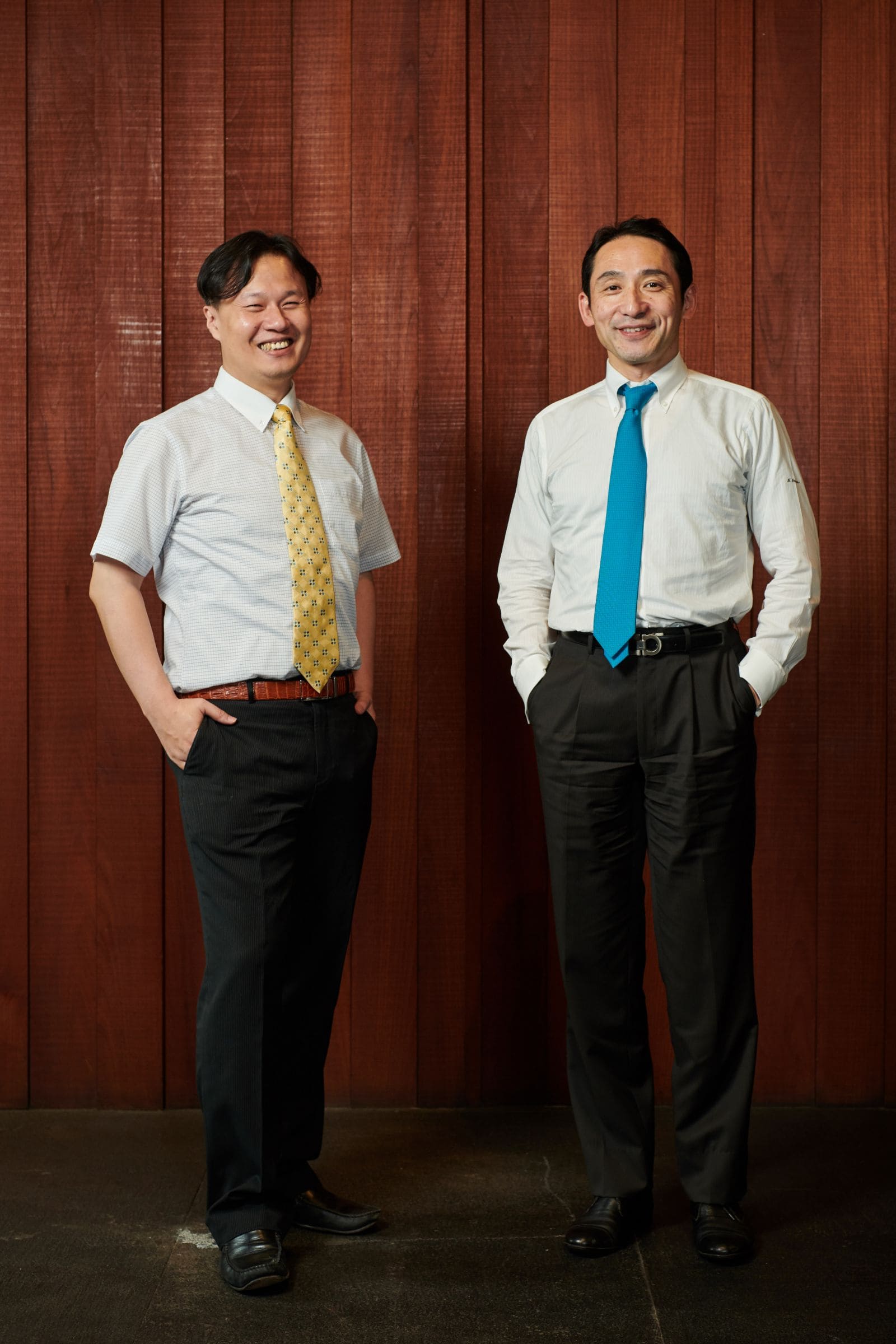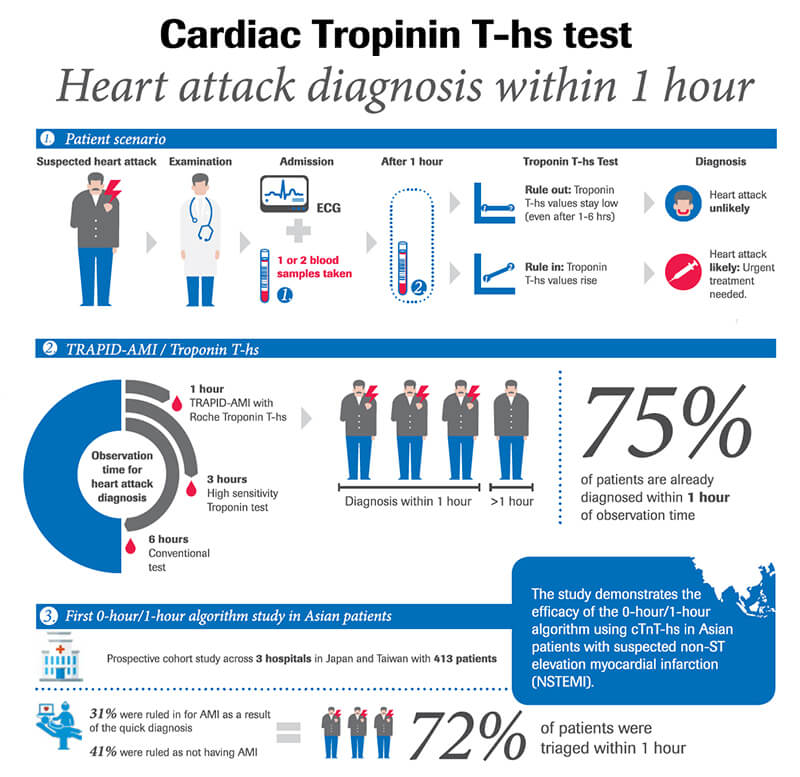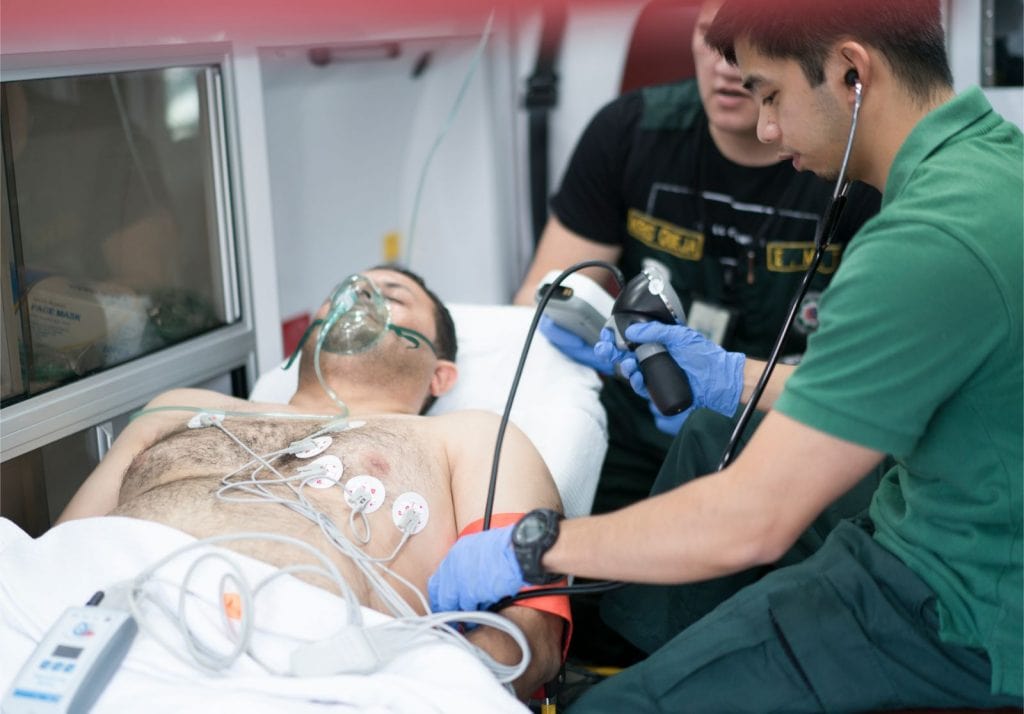
Can the diagnosis of heart attacks in one hour be made a reality in Asia? It was by sheer coincidence that Dr Kenji Inoue, Associate Professor, Department of Cardiology, Juntendo University Nerima Hospital in Tokyo, Japan and Dr Lee Chien-Chang, Associate Professor of Emergency Medicine at the National Taiwan University Hospital in Taipei, met.
They were attending a cardiac biomarkers seminar in Beijing, China in 2016. Dr Inoue was there because this was pertinent to his area of practice while Dr Lee decided to attend as the topic was of interest. As an emergency department (ED) physician, Dr Lee had first-hand experience dealing with patients brought in with sudden and acute illness or severe trauma. “The whole process from the moment a patient arrives in the emergency department until they leave is very carefully managed and monitored by senior medical staff. Our aim is to ensure patients that need critical, life-saving treatment get it right away.”
“And, it’s no different in cardiac cases. In Taiwan, patients with chest pain and other heart attack symptoms account for 6 to 8% of all emergency department consultations. In most cases, we found the time from the heart attack to diagnosis and then treatment could be a couple of hours. So I was keen to hear what experience other doctors had using cardiac biomarkers and how it helped to speed up diagnosis,” he said.
Used in conjunction with clinical information, the rapid and accurate testing of cardiac markers is crucial especially in acute events like heart attacks where every minute counts.
A heart attack, or acute myocardial infarction (AMI), is a cardiac event in which the blood supply to an area of the heart muscle is interrupted, causing the muscle cells to die. When a heart attack occurs, the heart releases a protein called troponin into the blood stream. Doctors use cardiac troponin tests to detect the troponin levels in the blood and ascertain whether a patient has suffered a heart attack.

Life and death decisions
But there is a challenge.
Earlier generations of these troponin tests, which are still used in several hospitals in Asia, require considerable time to detect the troponin release, sometimes requiring up to six hours with less sensitive troponin tests. This means patients may end up waiting for several hours in the emergency department.
However, newer generation troponin tests such as the high sensitivity troponin T tests are starting to change that. Prompt treatment is essential as every 30 minutes of delay increases the relative risk of mortality by 7.5% in patients with AMI.1
A high sensitivity test can detect subtle increases in troponin levels which allows earlier detection of heart attacks; shortening the time required for diagnosis by almost three hours. In addition, it also improves risk stratification of patients with elevated cardiac troponin levels with and without acute cardiac events.
Quick diagnosis to save lives
On that fateful day in Beijing, sitting next to Dr Lee was Dr Inoue, a well-regarded cardiologist, who had been grappling with a peculiar challenge. “There is no doubt that cardiac biomarkers such as the high sensitivity troponin T tests are reliable indicators of heart attacks and help to speed up the diagnosis of heart attacks. But new tests are only effective if doctors use them. What happens in the absence of protocols?”
“The real game-changer for me was the research led by Professor Christian Mueller which provided concrete evidence that confirmed observation time needed to rule-in or rule-out a heart attack could be reduced from three to six hours to just one hour.”
TRAPID-AMI, a prospective observational study, investigated more than 1,200 patients with acute chest pain during 2011-2014.2 The study was conducted in 12 institutions from nine countries and three continents, led by Professors Christian Mueller from the University of Basel (Switzerland), and Bertil Lindahl of the University of Uppsala (Sweden). It is the first clinical trial validating a short diagnostic procedure constructed from two blood tests taken from the patient one hour apart in early chest pain patients. Following this, the European Society of Cardiology (ESC) recommended the use of high sensitivity troponin T testing with the accelerated algorithm in its 2015 guidelines.3

On a quest for answers
“I must admit I was relentless in my pursuit. I wanted to know whether this could work in Asia where we have such diverse healthcare settings. But I needed more data and I needed a like-minded collaborator,” remembers Dr Inoue.
“Since Dr Lee and I were sitting next to each other, we began talking and soon discovered a lot in common,” said Dr Inoue. One of which was their passion for research.
“The Severe Acute Respiratory Syndrome (SARS) outbreak in Taiwan in 2003 really changed my perspective. While we were dealing with this crisis, I began to wonder how the families of SARS patients did not get infected in spite of living in such close proximity. Since all emergency doctors had to be in quarantine for a month after the outbreak subsided, I used this time to dig deeper. We collected serum from people in close contact with the SARS patients to understand whether they were immune to the virus or not infected at all and found that none of them had been infected. We had only 20 samples on the basis of which I did my research. To my surprise, the findings were published in several medical journals and thus began my journey into clinical research,” said Dr Lee.
“Emergency medicine physicians are so busy that I didn’t think they have time for clinical research. So I casually mentioned the idea to Dr Lee and told him I wanted to study whether the 0-hour/1-hour algorithm could work in Asian patients. Before you know it, we were discussing the practicalities involved in the research,” added Dr Inoue.
Strained healthcare resources: the on-ground reality
With increasing incidence and the high cost of care for cardiovascular and metabolic diseases, early diagnosis and improved treatment options are vitally important to clinicians, healthcare systems and, above all, to patients. With the rising burden of chronic diseases and fast-ageing populations in Asia, emergency departments are getting busier. This is a major public health concern, not only because it overburdens already strained hospital resources but because of the grave implications it has on patient outcomes.
“Over the years, the number of patients coming into the emergency department has increased, so efficiently managing resources is our number one priority. But the question always is – is there a way to determine which are the non-emergency cases and move them to the appropriate departments?” Dr Lee said.
In the case of heart attacks this was possible. The cardiac high sensitivity troponin T test had proven to work effectively in quickly ruling in or out AMI cases. “We were coming from two different sides, looking at the different challenges we face but working towards a common goal. In the emergency department, our focus is patient prioritisation and the optimal use of resources,” he added. For Dr Inoue it was determining the utility of the accelerated algorithm for Asian patients.
And so they began. Over 400 patients with suspected non-ST elevation myocardial infarction (NSTEMI) from three hospitals in Japan and Taiwan were included in the study.4
“This has been a remarkable journey. When the results were published in the International Journal of Cardiology we knew we had achieved something we could be proud of,” said Dr Inoue.
“This research is the first to demonstrate the clinical significance of the 0-hour/1-hour algorithm in Asia. We now have plans to study the cost-effectiveness of rapid diagnosis using the accelerated algorithm,” Dr Lee stated.
Hear from one patient as he shares the personal story of his heart attack diagnosis.
References:
1De Luca G. et al. 2004. Circulation. 109(10) 1223-5.
2Mueller, C. et al. 2015. Ann Emerg Med. 10.1016.
3Roffi M. et al. 2015. Eur Heart J. Aug 29.
4Shiozaki M, Inoue K, Lee CC, et al. 2017. Int J Cardiol. 15;249:32-35.














